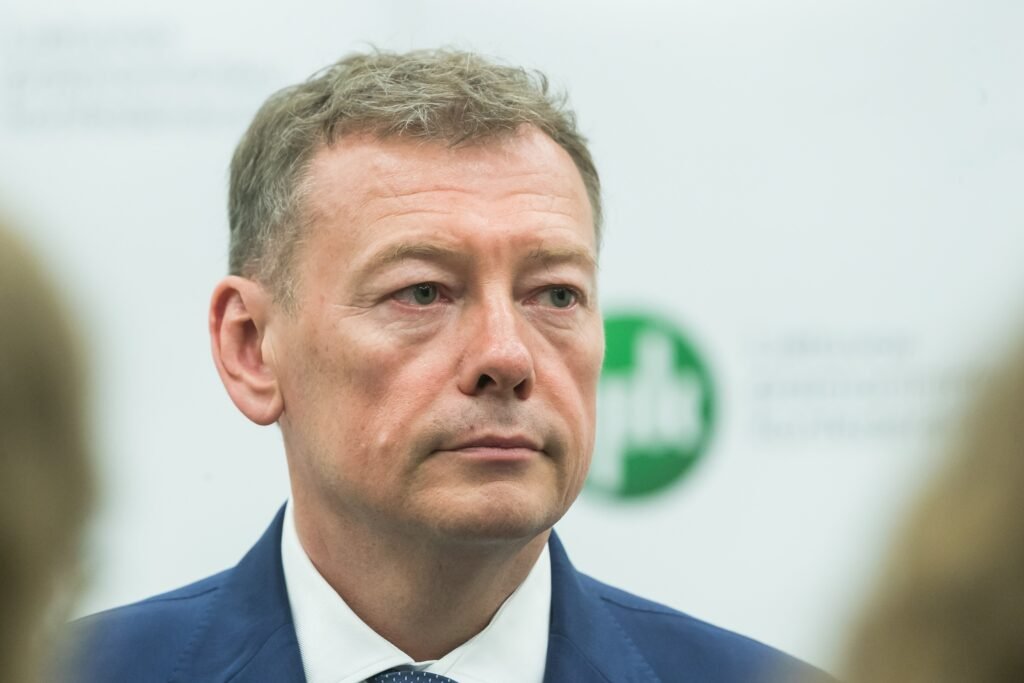V. Janulevičius: Next year’s challenge is the ability of all of us to take advantage of future opportunities

2020 will be seen by both business and society through the prism of the changes and challenges posed by the coronavirus pandemic. The COVID-19 pandemic is not only the biggest health crisis of the century, but also an economic crisis. For business, this year has been a year of great challenges: a global pandemic, broken supply chains, Brexit and more.
Both the first and the second wave showed that Lithuanian business is very flexible and responds dynamically to the current uncertainties. 2020 in Q1-Q3, industry generated more than a fifth (20.4%) of all value added in Lithuania. The contribution of industry to the Lithuanian economy remains higher than the EU average (18.8%), but has been declining in recent years. For comparison, Lithuanian industry created 23.3 percent added value in 2010. The agricultural sector (4% of total value added) and the education and vocational training and administration sector (7%) generate a larger contribution to the Lithuanian economy, compared to 2010.
Macroeconomic data of the fourth quarter shows that despite the strength and complexity of the second wave of COVID-19, the impact on the Lithuanian economy was very small
We can only rejoice that Lithuania has surprised many with the resilience of its economy to a pandemic, to disrupted global supply chains and quarantine. What we saw in the first three quarters of this year, as well as macroeconomic data of the fourth quarter, shows that despite the strength and complexity of the second wave of COVID-19, the impact on the Lithuanian economy was very small compared to other EU countries.
As in previous crises, exports have remained one of the most significant drivers of our economy. Statistics show that exports of goods of Lithuanian origin to the EU market increased by a total of 131 million. Eur in the third 2020 quarter compared to the same period in 2019. But we really can’t rest on our laurels, because the overall 10-month statistics recorded some downward trends. According to the data of January-October of 2020, the export of goods of Lithuanian origin was 7.6 per cent less than in 2019 during the relevant period. Looking at the performance of companies and general trends, it is likely that the indicators for the fourth quarter will be better and we will maintain at least 2019 level.
Statistics show that the level of investment in Lithuania, compared to other EU countries, remains low.
It is worrying that due to the economic downturn caused by COVID-19 and high uncertainty investment in Lithuania during the three quarters of 2020 fell by more than 24% compared to the same period in 2019. Statistics show that the level of investment in Lithuania, compared to other EU countries, remains low. In terms of the ratio of foreign direct investment to GDP, Lithuania (35%) is 20th country among the EU members, Latvia (54%) – 15th, Estonia (84%) – 7th.
We will only be able to change the situation in our favor if the Government implements its program plans to improve investment conditions and the business environment. Attracting new investment is also closely linked to the relocation of production from Asia to Europe. This year has brought trends such as ‘chain shortening’ and the abandonment of Asian suppliers, and with these trends come new orders for our companies. But in order to take advantage of the new opportunities opened up by the pandemic, “homework” must be done by both the government and the companies themselves.
We have already reached a level where we can no longer compete with high-tech countries for cheap labor.
In the long run, one of the most serious challenges is Lithuania’s competitiveness. In 2020 the average level of production capacity of industrial enterprises was about 73% and decreased by 4% compared to last year. The production capacity of our companies decreased the most (up to 68%) during the first wave of the pandemic. In November it rose to 75 percent. According to the calculations of the Lithuanian Confederation of Industrialists, based on the data of the Lithuanian Department of Statistics, labor productivity in the industrial sector, at constant prices, have grown 6,3 percent since 2015. At the corresponding period, wages and salaries at constant prices increased by 17.4%, which determines the declining competitiveness of Lithuanian enterprises.
We have already reached a level where we can no longer compete with high-tech countries for cheap labor. Therefore, it is very important to modernize our economies and take advantage of the opportunities provided by Industry 4.0, to exploit our scientific potential. And we must do that, because so far changes in the structure of the industry are only visible in low- and medium-low-tech industries. In addition, low- or medium-low-tech industries continue to dominate in Lithuania in terms of industrial output. In 2020 low-tech industries accounted for 52 percent of total industrial production, medium low-tech industries – 21%, medium high-tech – 24%, and high – 4%. For comparison, in 2010 low-tech industries accounted for 57%, medium-low industries for 16%, medium-high industries for 24% and high-tech industries for 3%.
Although in the last 10 years Lithuanian business has started to invest more in R&D, the gap with the EU average has not narrowed
It is very important that in the future we find joint solutions with the Government to promote business and science cooperation. It still remains very sluggish – business investment in research and development remains low (according to the latest data, it reached 0.43% of GDP in Lithuania in 2019, and the EU average is 1.46%). Although in the last 10 years Lithuanian business has started to invest more in R&D (0.23% of GDP in 2010), the gap with the EU average has not narrowed, as similar trends are observed throughout the EU.
Obviously, next year will be another year of challenges, during which we will have to stand on our feet after the second wave of quarantine. But an even bigger challenge for the development of our whole country will be our ability to seize the opportunities that lie ahead: how will we be able to seize the EU’s agreement on an unprecedented economic recovery plan that enables us to make fundamental economic changes and increase our competitiveness. The next very important step is to give us opportunities for transformation and to allocate funds to achieve the goals of the Green Course. The circular economy and the green course are the factors that will ensure our independence, a clean, green and healthy future in the long run, but we just need to be prepared to work together, both business and government, and not be afraid to make decisions leading to fundamental change.
Vidmantas Janulevičius, President of the Lithuanian Confederation of Industrialists



